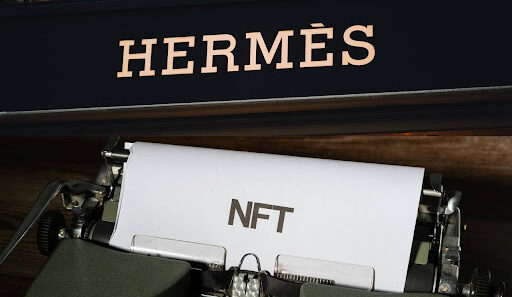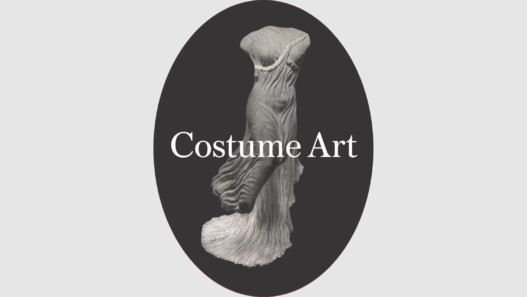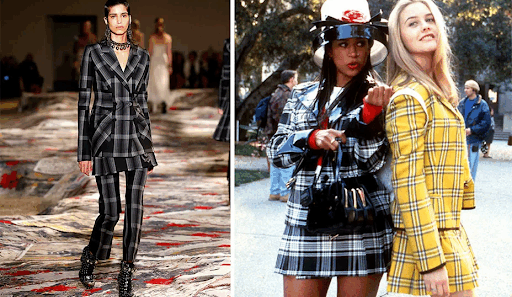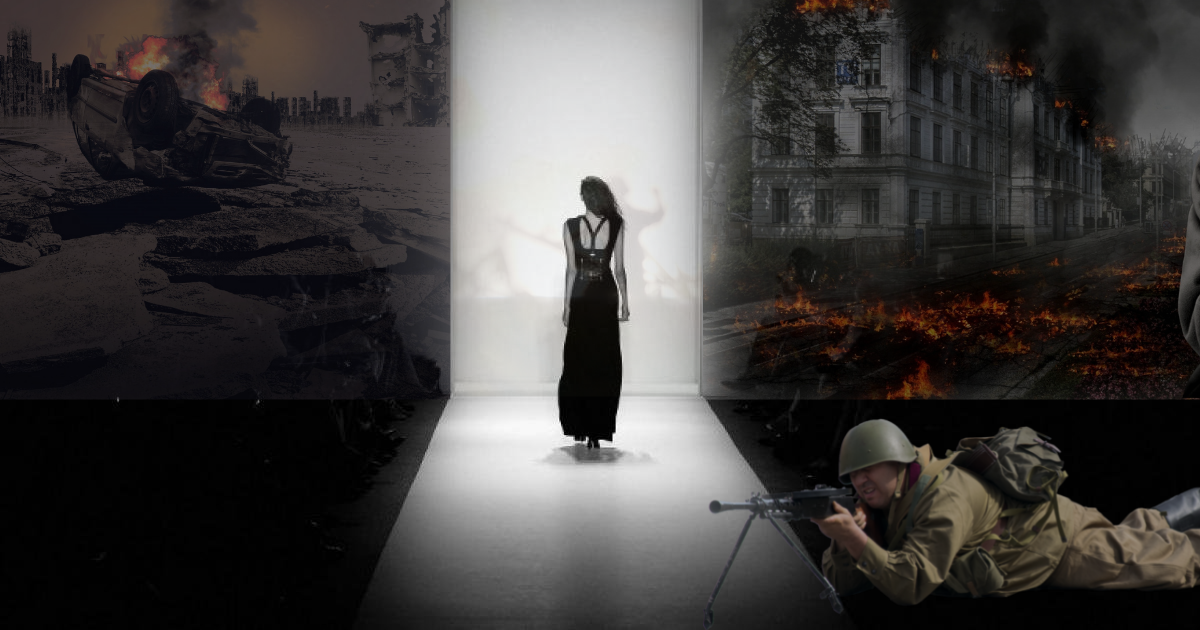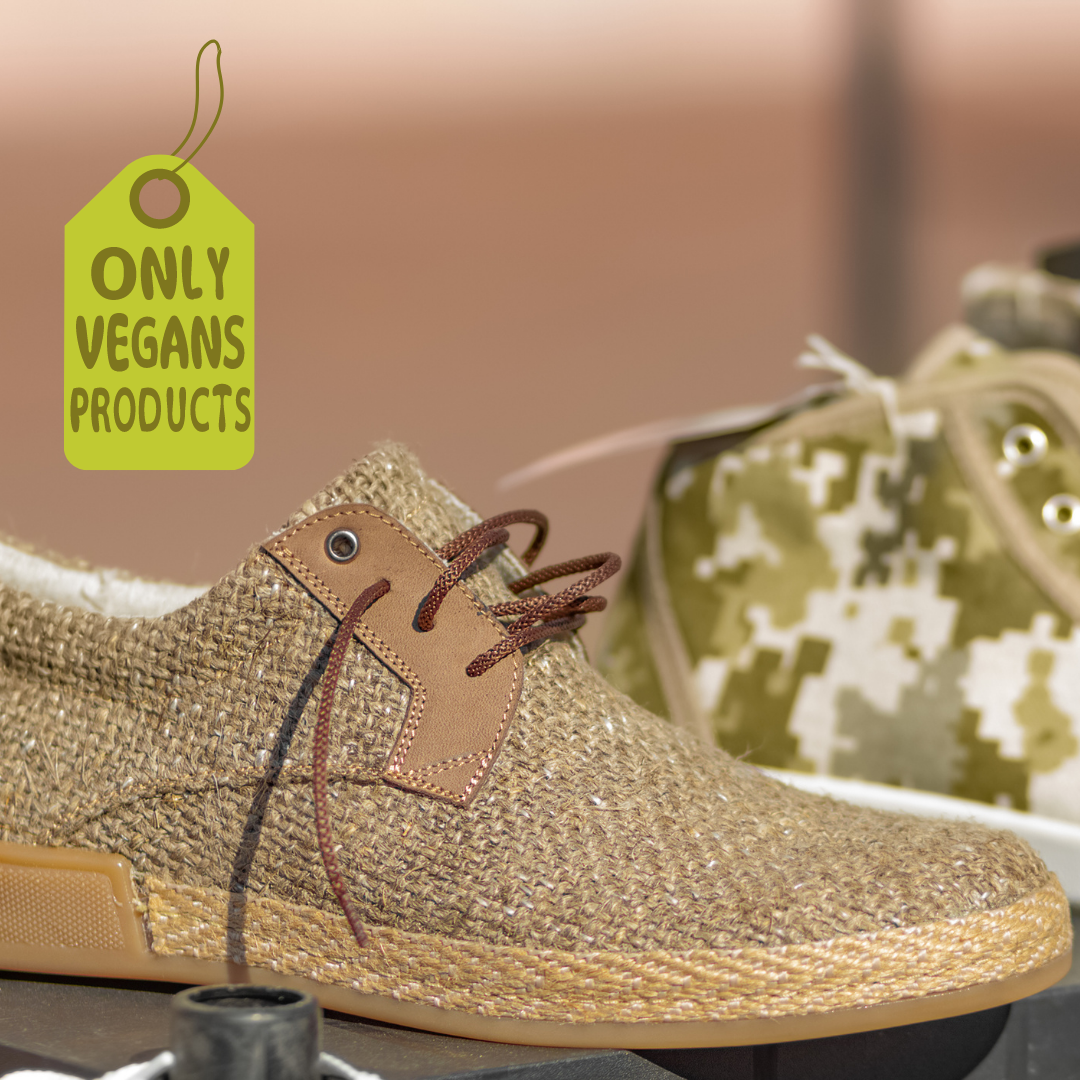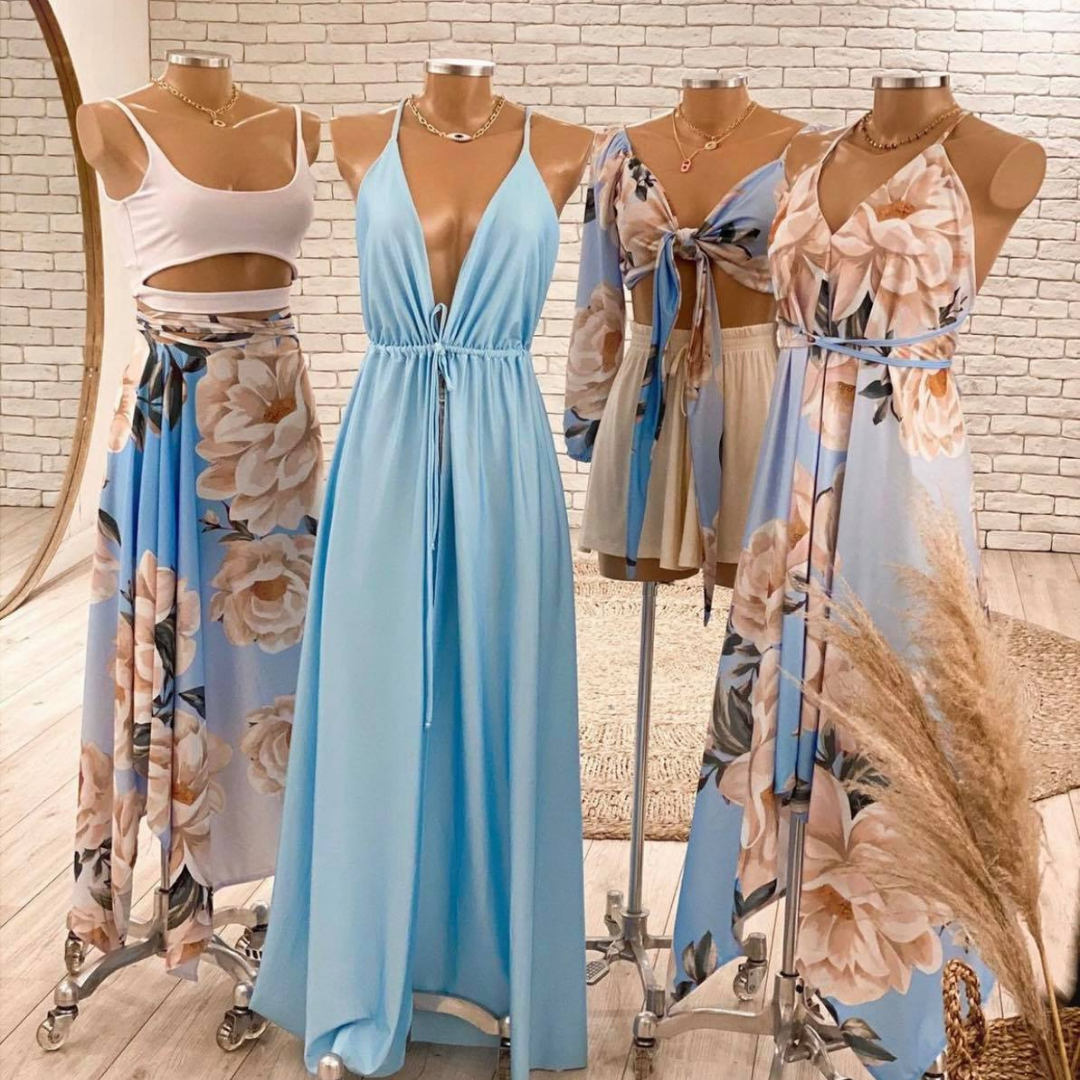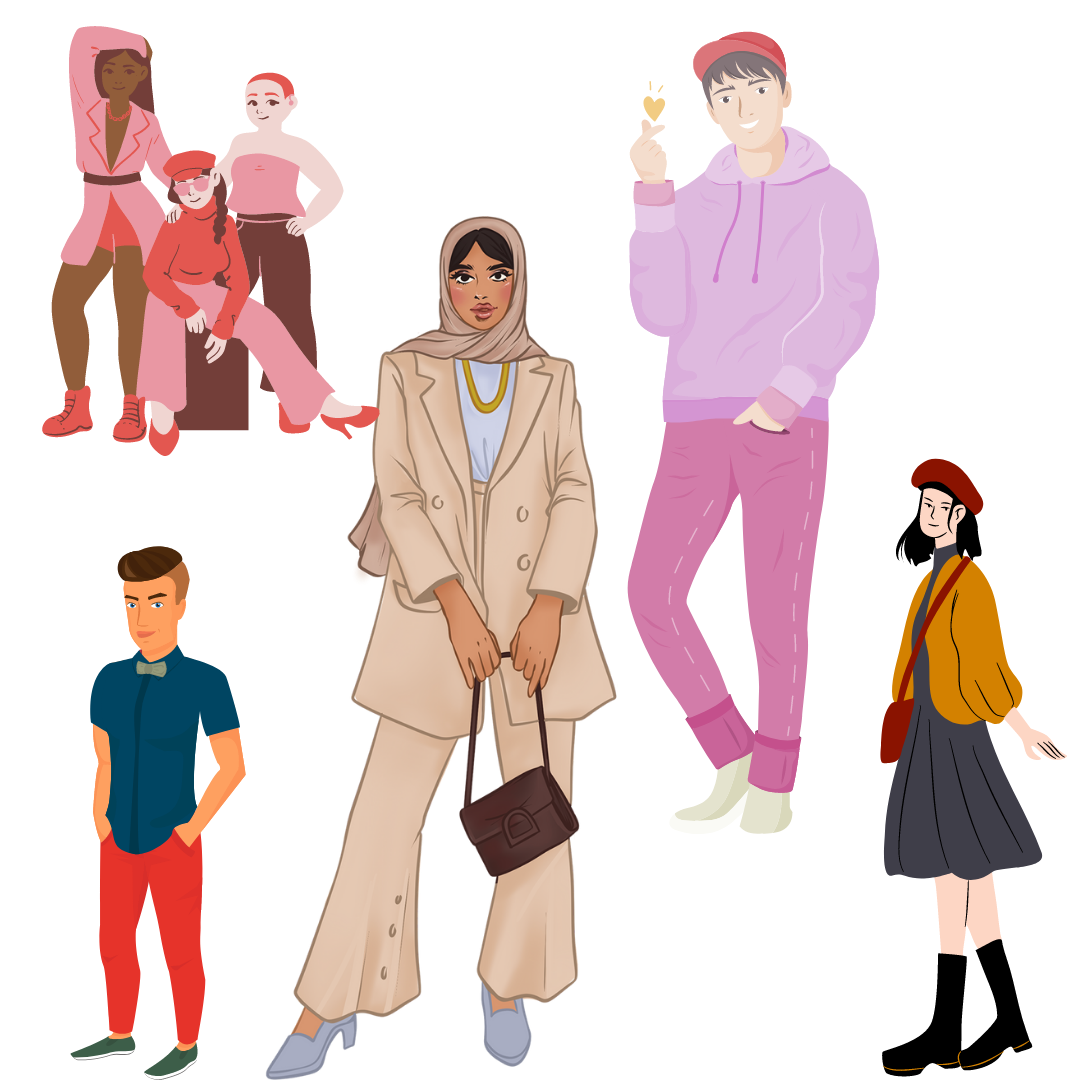The problems of the fashion industry are more often than not perceived as a first-world problems because when I say ‘fashion’ the image of Becky from ‘Confessions of a Shopaholic’ or Carrie Bradshaw from ‘Sex in the city’ comes into your mind. However, in reality, the fashion industry is far larger, it’s an ecosystem of its own. The industry encompasses several different niche industries; from the spinning of yarns to the purchase of finished apparel by a consumer, it’s the fashion industry, and that includes everyone from weavers, artisans, factory labourers, manufacturers, designers, investors, retail managers, models, photographers and more. In contemporary times the internet and social media influencers of various social media platforms have had a huge impact on the fashion industry, wherein influencers and bloggers have aided in the creation of trends, increasing the demands of certain items, making it widely popular and even impacting consumer consumption patterns. Therefore, millions of skilled individuals are involved in the process conceptualization, creation, production of clothing that is worn by us.
When an industry is as widespread as this, conflicts such as war are bound to create a domino effect. Historically war has always affected the fashion industry, changing the face of fashion more often than now, war between countries on territorial conflict or trade is no different. With a process so intricate, style is never an caused by accident, artist’s epiphany, or coincidence, it is a product of influence, availability of resources and necessity garbed as art. This article analyses the wider impact of war, past and present on the fashion industry in an attempt to shatter the myths of vanity surrounding the age-old industry.
HOW DOES CONFLICT AFFECT THE FASHION INDUSTRY?

Image Courtesy: https://esgrobot.com/textile-apparel-fashion-sustainability/.
A single piece of garment bought by you at a retail store, or an online retail website has travelled a long way before reaching to you, i.e., the final consumer. The place where the yarns of a fabric are spun and dyed can be different from where the yarns are weaved together to create fabrics, which might be separate from where the fabric is measured, cut, stitched, and assembled to be packed for retail. In India alone the textiles and apparel industry created 13 % industrial production and 12% of export earnings, contributing to approximately 2.3 percent of the country’s GDP.[2] The textiles and apparel industry within the fashion industry is considered as the second largest employer in the country that provides employment to 45 million people.[3] Globally, various fashion brands have suppliers spread across different countries, their business operates due to a smooth functioning supply chain. In the case of luxury fashion brands, the supply chain of products is sought after with research on logistics, quality, and cost efficiency whereas for fast fashion brands the supply chain is consumer-focused that aims to sell large product quantities at low quality with cost effective strategies.
However, in the case of a conflict whether it be minor or grave, all these supply chains stand to be affected which in turn directly affects the efficient production of the products. The fashion industry thrives on availability of raw material and effective functioning of supply chains but conflicts between nations cause a disruption in those very supply chains and networks, creating price differences in raw materials, causing loss of money and business, hampering the industry and its several stakeholders.
PAST HISTORY
One of most prominent effects of war on the fashion industry is the evolution of style. While the evolution of style such as change in shape of clothes, colour palate and designing nuances are popularly perceived as artists’ creativity but in reality, it always been the necessity of given circumstances. Changes in fashion are not stand-alone acts of creativity, they are subject to influence, the necessity of the said time, and primarily dependent upon the availability of resources. A brief analysis of the root causes for the changes in style during and after World War I and World War II highlights how the fashion industry has always been subjected to collateral damage while widely being perceived as vanity.

Image Courtesy: https://blog.bridgemanimages.com/blog/clothing-during-world-war-i-how-the-war-influenced-the-fashion-industry.
WORLD WAR I
When the first world war began in 1914 the world did not anticipate its duration or its impact. In 1915 when people began experiencing the real extent of the war, fashion houses also started taking note. Subsequent collections of designers exhibited military influences wherein pockets were introduced in women’s daywear. The previously restrictive clothing for women such as the hobble skirt were discarded with lengthier tunics and fuller skirts with shorter hemlines taking their place. During this phase, fashion began catering to the needs of the lower class.[4]
A female worker gauges shells in a munitions factory during the first world war. Composite: Hulton Deutsch/Corbis via Getty Images[5]
The wartime period created a heavy demand for domestic labour in nations that compelled the states to employ women at factories to meet manufacturing and production demands such as that of ammunitions. Impractical and high maintenance clothing was no longer preferred for daily wear, workers needed clothing that allowed them to perform a range of motions at work.[6] Naturally, the general trend of clothing leaned towards loose and bulkier designs that allowed men and women to work efficiently in factories. The bulky clothing style was not only ideal for working but also ideal for mass production. With the constant high demand for military and medical uniforms the industry was required to conduct rapid mass productions. Under such circumstances the loose fit of the garments not only allowed for easy production (effortless fabric cutting) but also created common sizes for wider range of body types. [7]
However, the production of standardised uniforms in bulk required immense corporation between the garment manufacturing and textile industry. The necessity of corporation led to introduction of mechanization in the clothing manufacturing process. The machine for buttonholing garments was invented by the Reece Machinery Company in the United Sates at this time (1914) to increase the efficiency of uniform production. [8]
Further garments became more versatile, skirts were replaced by trousers and bloomer dresses, lose jackets and jumper blouses became popular among women for their versatility.[9] While the custom of dressing four times a day or evening gowns died down during this period, women were still purchasing fancy garments from their earnings from working at the factories.[10]



The first world war changed garment making from craftmanship to largely a standard mechanized production process. The shipping blockage during the war led to the fall of France’s position as the world’s fashion capital.[12] By the end of the war production centers in America were exploding with surplus production of ready-to-wear cheap garments and Britain introduced the production of budget-priced clothes to provide for the population whose incomes were deeply impacted due to the war.[13] Further with the return of men from war, gender roles were reinforced in every way, including fashion. The men were now few in number as compared to the women. Subsequently, Skirts became slimmer, tunics became shorter, and women began to dress in fitted clothes in order to appear more attractive to the other gender.[14] Thus the significant changes in the fashion industry and the rapid evolution of style during and after the wartime period highlights the drastic impact of war on the industry. Those who adapted to the rapid changes were able to stay afloat in the industry while the others ran into losses due to their inability to keep pace with changing times and technology.[15]
WORLD WAR II

Image Courtesy: http://longislandsewing.blogspot.com/2017/03/world-war-ii-fashion.html.
Similarly, the industry was again subjected to changes during the second world war (1939-1945). The second world war was a period of rationing wherein the limelight shifted from fashion to the functionality of garments. Even though governmental regulations dictated the style of clothes manipulating everything from length to colour and cut, yet fashion was still thriving. This period shed the spotlight on American and British Fashion, giving them global recognition that was previously primarily dominated by the French fashion houses.[16]

The outbreak of war increased the demand for fabric for uniform and parachute-making purposes. Subsequently, the American and British governments introduced a slew of regulations restricting excess use of wool, silk, and fabric in general, the aim was to ration the use of fabric for garments as much as possible. Such strict regulations reflected the coupon system as well, while in 1941 the government was giving out 66 clothing coupons to each British adult that number drastically dropped to 48 and further 36 in 1945. The decrease in number of coupons forced the British public to change their consumption pattern, buying only what is necessary and using items for as long as possible. In 1941 the Past Utility Scheme was introduced by the British Board of Trade which regulated both quality and price of clothing manufactured in England. The measure was taken to bring constant changes in fashion to a standstill, saving more fabric for parachutes and uniforms. [17] While the Incorporated Society of London Fashion Designers was formed in London by leading British couturiers with the ultimate goal of designing quality elegant clothing as per the government’s regulations, the American War Production Board was formed in the United States for the same purpose. [18]

Members of the Women’s Land Army in 1943 Photograph. Image Courtesy: The Guardian[19]
The regulations limited everything from the circumference of garments, to the number of pockets, pleats and even buttons. Moreover, the fabrics the fabrics used were no longer pure but primarily synthetic blends. Further, the use of zippers was prohibited in garments to save metal for ammunitions, shoes with wooden soles called ‘wedgie’ was introduced to stop usage of leather in women’s shoes and ladies’ silk stockings were banned due to silk shortage in the market. In an attempt to curb fashion’s appeal, the US Production Board issued Limitation Order 85 (L-85) in 1943 wherein the order was designed was to save domestic fabric production by 15% and 40 million pounds of wool cloth. The aim was to make older styles and fashion more appealing by creating a fashion freeze. [20] The 1943 order directed a reduction of fabric usage in women’s swimwear by 10% which resulted in the creation of the two-piece swimsuit.[21] Subsequently, in 1946, the first two piece was named as ‘bikini’ after Bikini Islands in the Pacific Islands where atomic bomb tests had taken place.[22]

Image Courtesy: New clothes from old discard | Britannia and Eve | 1 May 1942[23]
During the war, the restrictions imposed by law determined fashion. However, post-war victorious nations swiftly returned to luxurious fashion to relish their victory. Following a similar pattern of strict gender role imposition as overserved in WWI, post WWII was no different, women working at the factories were back at home, wearing silk petticoats, corsets, full skirts, and their favourite heels. Time and again fashion has been perceived as a reflection of lifestyle and values of people and hence the fashion developed post war is luxurious, and optimistic, hopeful of a brighter future.
CONTEMPORARY TIMES
With the advancement of technology and globalisation the fashion industry has grown to function efficiently through supply chains and networks that are spread across several nations. While in the past the major issue faced during wartime was the availability of resources, in contemporary times the issues vary however the essence of the problems remain the same. A conflict in present time threatens to disrupt trade relations between nations that subsequently affects established supply chains, leaving traders scrabbling for alternative solutions. An analysis of the impact cause by the Russia Ukraine war on the fashion industry so far and the possible future consequence of the ongoing war allows one to draw a parallel between the past and the present, proving how fashion has always been more than a first world problem.
RUSSIA UKRAINE WAR

Image Courtesy: https://www.cnbc.com/2022/03/03/ukraine-news-retailers-start-warn-of-business-impact-from-russian-invasion.html.
When the Russian invasion of Ukraine began on 24th February 2021, the intensity of the conflict was not anticipated. The likelihood of a potential war in the 21st century was a farfetched in the eyes of many until the conflict escalated causing loss of lives and property. While the Russian apparel market is approximately valued at US $ 38,196 million in 2022, Ukraine’s market is worth US $ 5.027 million, together the two nations account for merely 5% of global luxury sales yet its disruption has caused ripples within the industry.[24] Russia and Ukraine are not essential contributors or stakeholders in the industry however a conflict between the two is an appropriate example of how minor disruptions in a widespread industry causes domino effect harming all stakeholders in the era of globalisation.
Even though the EU nations have come together to place sanctions on Russia, the reality of the matter is these very sanctions are likely to cause an equal loss to EU nations. For example, Italy has exports good worth 1.2 billion to Russia, these exports are crucial for the country’s business and loss on such important orders post pandemic is horrifying for the Milan fashion week and other stakeholder who desperately want consumers to return to pre covid trade habits. [25] Similarly, the halt of retail operations of fast fashion brands such as H&M, Zara, Asos, Mango and luxury brands such as Louis Vuitton , Gucci, Prada, Burberry, Dior in Russia in the name of solidarity against is going to cost an economic loss to the brands as much as the inconvenience caused to the Russian consumers. [26]
Dr Sheng Lu, the Associate professor of fashion and apparel studies at University of Delaware, states, “While Russia and Ukraine play a minor role in apparel production and trade, it doesn’t mean the apparel industry is immune to the ripple effects of the military conflict.”[27] Dr. Lu cites the example of the escalation of oil prices caused due to the conflict which would result in a huge price surge in oil driven textile fibres such as polyester. The increase in price of artificial fibres will drive the consumer demand towards natural fibre that would also be subjected to indirect price inflation due to the Russia-Ukraine conflict.[28]
Sanjeev Manchanda, president of Panipat Dyes and Chemical Traders’ Association in Panipat India noted that the Russia-Ukraine war will result in a direct impact of on prices of raw materials such as dye chemicals that the imported Turkey and Germany. Due to the ongoing conflict, the prices of the raw materials faced a 10-35% increase causing an issue for traders like Sanjeev who are now requesting concession on shipping and import charges from the government of India.[29] Increase in prices of raw materials causes huge losses for traders who have to manufacture pending product orders based on old prices.
It is important to note that Europe is also considered as one of the main consumers of Indian handloom, wherein there is a big market demand for home furnishing items made in Panipat. Panipat is home to approximately 10,000 small and large handloom units wherein there is an annual export of ₹10,000-12,000 crore which amounts to 80% of the total production which is exported to European countries. Therefore, when European nations get involved in a conflict directly or indirectly, its impact is likely to be felt by the traders in Panipat, India. [30]
Globalisation has led to trade relations among nations which in turn has led to the establishment of integrated network of supply chains and marketplaces, making nations dependent on the other’s actions. A non-performance tiggers disruption in the process that subsequently affects another’s performance leading to a domino effect. Thus, it can be observed that despite the small role played by Russia and Ukraine within the fashion industry as export consumer markets or importer of raw materials, a conflict between the two has strained supply chains for raw materials as well as caused losses to retail business.
CONCLUSION
The process of garment making includes several steps from sourcing the raw materials for the fabric to retail of the garment to the final consumer. Hence when even a minute disruption in the process chain can cause inconvenience a massive disruption in the form of a war is capable of causing ripples in the industry leading to massive losses. The analysis of losses faced by the various stakeholders and consequences of conflict suffered by industry demonstrates its significance in the global trade and economy, making it considerably larger than a mere first world problem. Thus, the past and present wars highlight the direct impact of conflicts on the fashion industry around the globe.

The first bikini was worn by Micheline Bernardini in 1946.
However, despite the constant issues faced by the industry what remains commendable is an artist’s creativity and the human nature to adapt to change. In the midst of several restrictions on the usage of fabric and other resources, fashion still stands at the core of it all. The impression of vanity associated with the industry exists to date because of designers and artisans who have managed to remain creative even in the darkest of times, reinventing fashion through their perception every single time.
References:
[1] https://www.google.com/url?sa=i&url=https%3A%2F%2Fwww.gettyimages.in%2Fphotos%2Findian-textile&psig=AOvVaw2NLXpJjKw98SURYLzlhSz3&ust=1649497965341000&source=images&cd=vfe&ved=0CAsQjhxqFwoTCMCCzfuYhPcCFQAAAAAdAAAAABBD.
[2] HRK News Bureau, India’s textiles and apparel industry to employ 55 million by 2020, HRKATHA.COM (Jan.15, 2021). https://www.hrkatha.com/opportunity/indias-textiles-and-apparel-industry-to-employ-55-million-by-2020/.
[3] HRK News Bureau, India’s textiles and apparel industry to employ 55 million by 2020, HRKATHA.COM (Jan.15, 2021). https://www.hrkatha.com/opportunity/indias-textiles-and-apparel-industry-to-employ-55-million-by-2020/.
[4] AMY DE LA HAYE et al. FASHION SINCE 1900 50-51 (2nd ed. Thames & Hudson 2010).
[5] https://www.theguardian.com/world/2018/nov/11/women-first-world-war-taste-of-freedom.
[6] AMY DE LA HAYE et al. FASHION SINCE 1900 52 (2nd ed. Thames & Hudson 2010).
[7] Elizabeth Ewing, History of 20th Century Fashion. Hollywood: Costume & Fashion Design, 82 (2001).
[8] Elizabeth Ewing, History of 20th Century Fashion. Hollywood: Costume & Fashion Design, 86-87 (2001).
[9] Elizabeth Ewing, History of 20th Century Fashion. Hollywood: Costume & Fashion Design, 81-82 (2001).
[10] AMY DE LA HAYE et al. FASHION SINCE 1900 51- 52 (2nd ed. Thames & Hudson 2010).
[11] https://americanhistory.si.edu/blog/new-vogue-black-and-white-during-world-war-i-dye-shortages.
[12] Susan G. Contente, Clothing, World War I And World War II, ENCYCLOPEDIA,COM. https://www.encyclopedia.com/defense/energy-government-and-defense-magazines/clothing-world-war-i-and-world-war-ii#:~:text=World%20War%20II%20brought%20lasting,formality%20and%20variety%20also%20changed.
[13] Elizabeth Ewing, History of 20th Century Fashion. Hollywood: Costume & Fashion Design, 83 (2001).
[14] KATHLEEN M. LA BARRE ET AL., REFERENCE BOOK OF WOMEN’S VINTAGE CLOTHING, 1910-1919 132-135. (Dallas, OR: La Barre Books, 2006).
[15] Elizabeth Ewing, History of 20th Century Fashion. Hollywood: Costume & Fashion Design, 99 (2001).
[16]Lauren Olds, “World War II and Fashion: The Birth of the New Look,” Vol. 2 Iss. 1 Article 6. CONSTRUCTING THE PAST, (2001) https://digitalcommons.iwu.edu/constructing/vol2/iss1/6.
[17] Lauren Olds, “World War II and Fashion: The Birth of the New Look,” Vol. 2 Iss. 1 Article 6. CONSTRUCTING THE PAST, (2001) https://digitalcommons.iwu.edu/constructing/vol2/iss1/6.
[18] LYNN V TYRELL, CHANGING TRENDS IN FASHION: PATTERNS OF THE TWENTIETH CENTURY 96, (B. T. Batsford Ltd., 1986).
[19] https://www.theguardian.com/fashion/2014/nov/10/how-the-first-world-war-changed-womens-fashion.
[20] Susan G. Contente, Clothing, World War I And World War II, ENCYCLOPEDIA,COM. https://www.encyclopedia.com/defense/energy-government-and-defense-magazines/clothing-world-war-i-and-world-war-ii#:~:text=World%20War%20II%20brought%20lasting,formality%20and%20variety%20also%20changed.
[21] OBaker, Patricia. Fashions ofa Decade: the 1940s. (New York: Facts on File, Inc., 1992),19.
[22] Susan G. Contente, Clothing, World War I And World War II, ENCYCLOPEDIA,COM. https://www.encyclopedia.com/defense/energy-government-and-defense-magazines/clothing-world-war-i-and-world-war-ii#:~:text=World%20War%20II%20brought%20lasting,formality%20and%20variety%20also%20changed.
[23] https://blog.britishnewspaperarchive.co.uk/2017/11/13/economy-and-utility-in-wartime-fashion/.
[24] Praveen Menon, ‘Impact of Russia Ukraine Conflict on the Fashion world’, APPAREL RESOURCES (1-Mar.1, 2022). https://apparelresources.com/business-news/retail/impact-russia-ukraine-conflict-fashion-world/.
[25] Christina Binkley, To Do Or Not To Do : Luxury Sanctions On Russia,VOUGE (Feb.26, 2022). https://www.voguebusiness.com/fashion/to-do-or-not-to-do-luxury-sanctions-on-russia.
[26] Praveen Menon, ‘Impact of Russia Ukraine Conflict on the Fashion world’, APPAREL RESOURCES (1-Mar.1, 2022). https://apparelresources.com/business-news/retail/impact-russia-ukraine-conflict-fashion-world/.
[27] Laura Husband, EXCLUSIVE: US apparel industry prepares for impact of Ukraine-Russia war, JUST STYLE (Feb.25, 2022). https://www.just-style.com/news/exclusive-us-apparel-industry-prepares-for-impact-of-ukraine-russia-war/
[28] Laura Husband, EXCLUSIVE: US apparel industry prepares for impact of Ukraine-Russia war, JUST STYLE (Feb.25, 2022). https://www.just-style.com/news/exclusive-us-apparel-industry-prepares-for-impact-of-ukraine-russia-war/
[29] Neeraj Mohan, Russia-Ukraine war may affect Panipat textile industry, HINDUSTAN TIMES, (Mar 02, 2022 12:22 AM IST). https://www.hindustantimes.com/cities/chandigarh-news/russiaukraine-war-may-affect-panipat-textile-industry-101646160771486.html
[30] Neeraj Mohan, Russia-Ukraine war may affect Panipat textile industry, HINDUSTAN TIMES, (Mar 02, 2022 12:22 AM IST). https://www.hindustantimes.com/cities/chandigarh-news/russiaukraine-war-may-affect-panipat-textile-industry-101646160771486.html



